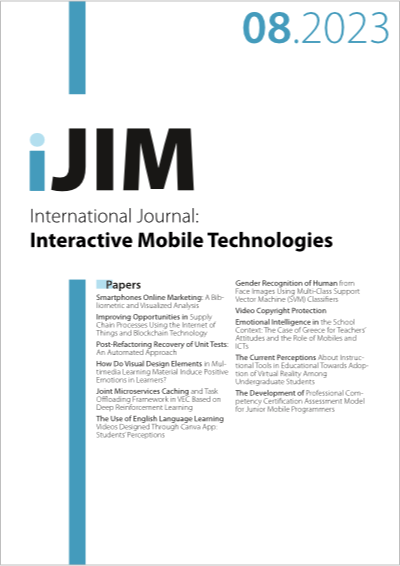Video Copyright Protection
DOI:
https://doi.org/10.3991/ijim.v17i08.39339Keywords:
copyright, chaotic map, Discrete Wavelet Transform, watermarkAbstract
Illegal distribution of digital data is a common danger in the film industry, especially with the rapid spread of the Internet, where it is now possible to easily distribute pirated copies of digital video on a global scale. The Watermarking system inserts invisible signs to the video content without changing the content itself. The aim of this paper is to build an invisible video watermarking system with high imperceptibility. Firstly, the watermark is confused by using the Arnold transform and then dividing into equal, non-overlapping blocks. Each block is then embedded in a specific frame using the Discrete Wavelet Transform (DWT), where the HL band is used for this purpose. Regarding the method of selecting the host frames, the chaotic map (tent map) was used to choose a number of frames which are greater or equal to the number of blocks of the watermark. The host frame selection method makes the discovery of the watermark information by illegal means very complicated. The experimental results show that the proposed method can produce excellent transparency with robustness against some attacks where the average_ PSNR reaches to 72.806.
Downloads
Published
How to Cite
Issue
Section
License
Copyright (c) 2023 Muna Majeed Laftah, Iman I. Hamid, Nashwan Alsalam Ali

This work is licensed under a Creative Commons Attribution 4.0 International License.



